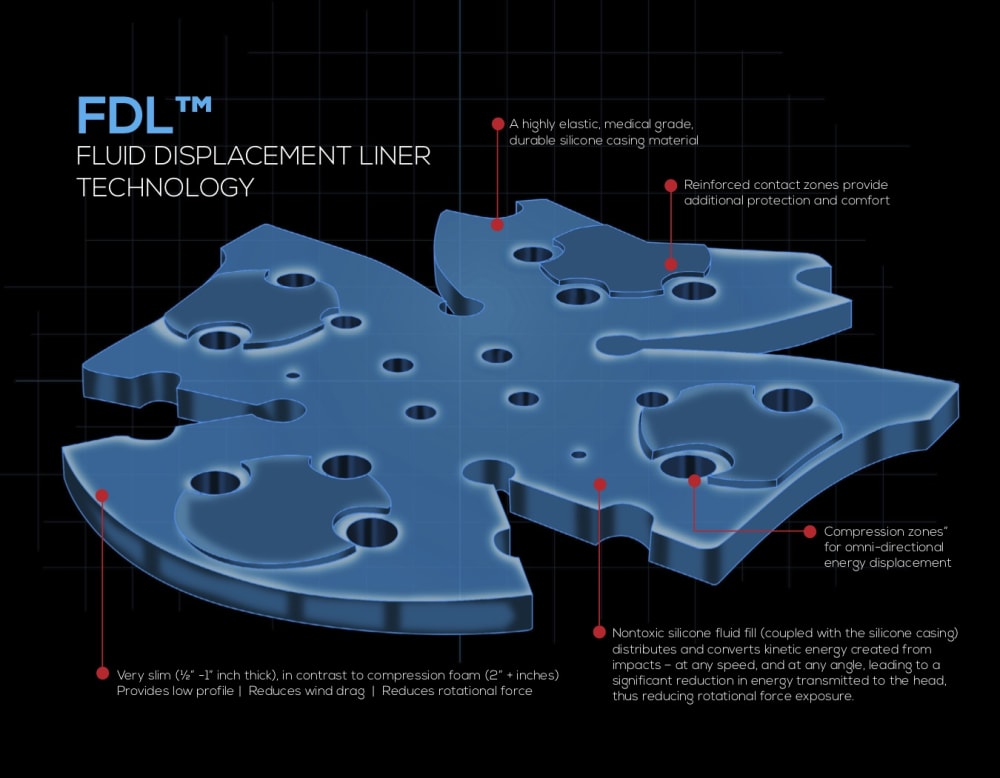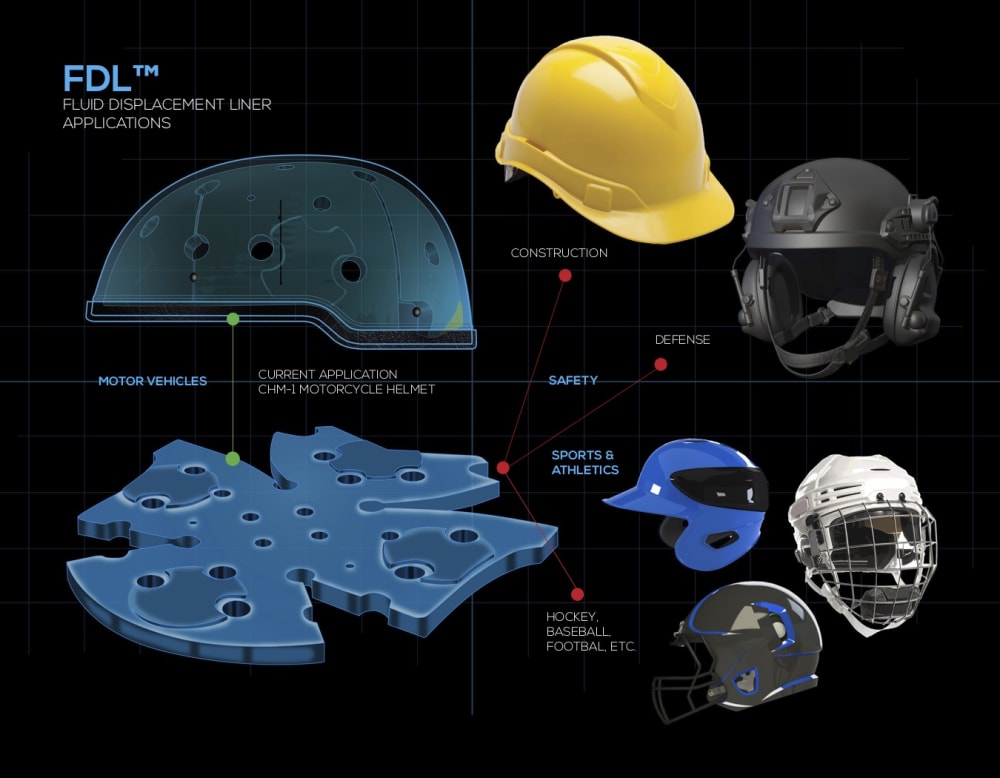

Patented Fluid Displacement LinerTM (FDL) technology is a revolutionary impact technology advancement in terms of performance, comfort, and style in comparison to stagnant safety helmet technology (e.g. compression foam), now prevalent for 6+ decades.
The inaugural application for FDL technology is the CHM-1 Half-Shell Motorcycle Helmet, which is the FDL’s Proof of Concept, and now commercialized. Our supporting videos and documentation showcase the CHM-1 as just one example of how FDL technology works.
From a performance perspective, the FDL allows kinetic energy to travel laterally throughout the liner, distributing the energy before it is transmitted to the skull. The FDL’s material and structure responds and absorbs within any energy range – enabled by multiple absorbing mechanisms (each designed to operate in a specific energy range and yet overlap to provide greater kinetic energy response efficiency).
The result is a more effective system for the distribution and conversion of the kinetic energy created from impacts – at any speed, and at any angle, leading to a significant reduction in energy transmitted to the head, thus reducing rotational force exposure. Rotational forces are the root cause for concussions, skull fractures, and other types of traumatic brain damage (TBI) to include Chronic Traumatic Encephalopathy (CTE).
From a comfort perspective, the FDL introduces “never seen before benefits” provided by a helmet liner. FDL benefits derive from the highly elastic and durable silicone casing material coupled with a nontoxic silicone fluid fill.
By using fluid (vs. rigid foam), the FDL naturally conforms to the wearer’s head and provides maximal comfort – as compared to “stuffing and squeezing” the head into rigid foam padding and manually tightening with suspension banding. Of additional uniqueness, the FDL offers cooling benefits (which can mitigate wearer exposure to heat hazards). While the FDL is safely secured during helmet use, it is easy to remove for sanitizing and cooling purposes (via refrigeration) and can be re-inserted back into the helmet with same levels of ease and safety.
From a style perspective: The FDL is very slim (½” -1” inch thick), in contrast to compression foam (2” + inches). By reducing liner thickness, the FDL enables an ultra-low helmet shell profile. Lower profile shells reduce wind drag (reducing neck tiring from constant “jerking” because of aerodynamic qualities and promotes wearer alertness), reduce head strike risks, and reduce torque during impacts (rotational force) because of its lower center of mass.
Low production costs: The necessary manufacturing systems are “CAPEX light”, repeatable, and modular. A single robot automates production by repeatedly pouring liners into molds, creating output efficiency and quality consistency. Minimal manpower is needed to operate the robot, load/remove molds into & from the robot, and progress the FDL thru remaining curing stages. Because of our manufacturing process efficiencies, KIRSH can invest in highest-grade materials, and yet offer our unique technology into already established price ranges with attractive margins.
Huge market potential and reach: Beyond motorcycles - KIRSH has identified 27 helmet applications across Sports & Athletics, Workplace Safety, and Motor Vehicles “kingdoms."
Video
-
Awards
-
 2020 Manufacturing/Robotics/Automation Honorable Mention
2020 Manufacturing/Robotics/Automation Honorable Mention -
 2020 Top 100 Entries
2020 Top 100 Entries
Like this entry?
-
About the Entrant
- Name:Jason Kirshon
- Type of entry:teamTeam members:Jason E. Kirshon
Donald A. DeVito II - Software used for this entry:SolidWorks, ANSYS
- Patent status:patented








